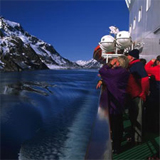|
Best time of year to see Northern Lights
The presence of northern lights have always attracted tourists in many parts of the country, hence individuals in this industry who depend on tourists
have the responsibility of determining which months of the years to expect them and make the necessary arrangements. According to the recent findings, northern lights are favored by the sun's surface temperatures of above 6,000 degrees Celsius. These temperatures usually rise to several million degrees to make the phenomenon a success with the collision between gas particles disintegrating into electrons and nuclei. In general, such occurrences are favored in the months of March and September as they offer the best conditions for that to happen.
March and September is also the month of maximum solar activity for the Earth and to be specific, it's on September 22 and March 22 on the night of a new moon, that is, very late in the night or during the early hours of the morning. With these guidelines, it's possible for one to make travel arrangements and be sure to catch a glimpse of the northern lights which have become a tourist attraction over the years. With these findings, parties that are concerned plan in advance by ensuring that the accommodation facilitates are plenty to avoid inconveniences. This month also combines the dark skies that have the mild temperatures for favorable conditions.
With respect to northern lights, it is now possible to find information outlined in major tourist journals displaying this inform means that during the spring and fall equinoxes, that is September 22 and March 22, the northern lights are more pronounced in terms of frequency as opposed to other months, although if you're not available during that time, there are alternatives periods. This period however is best, especially if you're doing research for educational purpose, as the display is normally clear.
The journals also state that during the nights and early mornings the northern lights is normally active and viewing it is very enjoyable though you'll have to sacrifice your sleep for that. However, the most intense presentation is during December to March when the nights are considered longer and the sky clearer and darker offering the ideal moments. This is the same month when individuals experience the coldest intervals of the year reaching as low as -40 F. Months like January and July are the least appropriate to experience northern lights, so be sure to note that when preparing to just catch a glimpse of the phenomenon, if not in a clear manner.
In general, areas that combine both mild weather and dark skies have been known to experience the northern lights phenomenon without a problem as opposed to other areas. Some areas also experience the northern lights in freezing zones that during the winter offer no full enjoyment to the viewers. So whatever the condition, be sure to keep in mind the mentioned ideal months in order to enjoy this spectacular event. You are bound to remember it for a LONG time to come.
↑ Back to Top
|
|

|
|